‘Mr. I Magination’…First CBS Childrens Show
‘Mr. I Magination’…First CBS Childrens Show
I must admit, I’m to young to have seen this, but have heard about it. Do you remember this?
This show debuted on CBS on April 24, 1949 and ran live as a half-hour weekly show till 1952. In a way, this was the CBS answer to ‘Howdy Doody’ on NBC and ‘The Small Fry Club’ on Dumont, but those shows were M-F shows. It’s likely the WCBS had a local kids show, but I don’t know…do you?
The host, Mr. I. Magination (Paul Tripp), dressed as a train engineer, and each week, different child actors would come in and ask questions about occupations, historical figures and activities and guests would come in to answer. The train could also travel in time so figures like Annie Oakley could be interviewed as is the case in this 1952 video. https://archive.org/details/Mr.I.Magination1952
Guests were as diverse as Damu, a lion tamer from Ringling Brothers Circus, and test pilot Scott Crossfield. Yul Brynner served as the director of the show at times, but did not appear as a performer. Two other actors that were later famous did perform on the show…Walter Matthau and Richard Boone. Incidentally, Tripp later made an appearance on Boone’s ‘Have Gun Will Travel’. Enjoy, share and help us fill in the blanks if you know more on this and ealy WCBS kids shows.
The NBC 8G Studio Cameras…One Of Television’s Rarities
The NBC 8G Studio Cameras…One Of Television’s Rarities
NBC’s official grand opening date for 8G, their second ever studio at 30 Rockefeller Plaza is listed as April 22, 1948. Actually, television had been coming from 8G long before that while it was still designated a radio studio.
The first show ever to come from 8G was also television’s first variety show…’Hourglass’, which debuted May 9, 1946. Later that year, ‘Let’s Celebrate’ was done here as a one time show on December 15, 1946 with Yankee’s announcer Mel Allen as host.
‘The Swift Show’ (a Swift Company sponsored game show), and ‘Americana’ (a game show about American history) started here in 1947.
With the RCA TK30 planned release date of late 1946, I have often wondered why the NBC engineers built these cameras to use in 8G but recent research put a new face on this and answers a few big questions.
NBC knew television had to grow fast after WW II, but there were still war related shortages, like phosphorus for kinescope screens and military embargos on technology like the Image Orthicon which was used in guidance systems. Believing that new cameras would come more slowly than RCA was planning on delivery, NBC engineers knew they had to have more than the cameras in 3H to work with. On the sly, the got four RCA Image Orthicons and four seven inch kinescopes for the VF and started to work building a camera I call the NBC ND-8G. The ND was an NBC engineering code that stood for New Development.
I think these cameras were actually ready for use by the spring of 1946. ‘Hourglass’ debuted from 8G on May 9, 1946 which was six months before the TK30 scheduled release in October. NBC got their first four TK30s in late June, just in time for the Billy Conn – Joe Louis rematch at Yankee Stadium.
I don’t think 8G, as a radio studio, had built in audience seating like 6A, 6B and 8H, but it was thankfully three times the size of NBC’s only other television studio, 3H. “Radio Age” states that 8G could handle four consecutive shows, which meant the often fifteen minute and half hour shows, with only one small set, could be staged one after the other from different walls of the studio.
Below we see the cameras in action on ‘The Philco Television Playhouse’ which originated in 8G beginning in October of 1948. Notice the camera peephole in the wall covered by a painting. Enjoy and share!
‘The Patsy’…Marconi Mark VIs and RCA TK60s In Action
‘The Patsy’…Marconi Mark VIs and RCA TK60s In Action, Exclusive
From the 1964 Jerry Lewis, Paramount release, ‘The Patsy’, here is an edited clip you can only see here. This gives us a good look at two classic cameras in action. The Marconi Mark IV cameras in the first part are owned by KTLA which was then owned by Paramount as well.
‘The Ed Sullivan Show’ used Marconi Mark IVs, but in the movie version of the show, they are using RCA TK60s. Had they switched the cameras used in the shoots, they would have been historically correct, but hey…it’s only make believe right? By the way, Lloyd Thaxton is the “host”. Remember his shows? Enjoy and share!
History In The Making…The Start Of RCA’s World’s Fair Exhibit
History In The Making…The Start Of RCA’s World’s Fair Exhibit
In these newly discovered photos. we see from left to right NBC President Lexon Lohr and RCA Chairman David Sarnoff signing the agreement to build the RCA Exhibition Building with Grover Whalen, who was President of the World’s Fair Corporation.
I don’t have a firm date for this, but suspect this is 1937. The photos are among the first that show us the original RCA Iconoscope studio cameras in NBC Studio 3H. These dark color cameras precede the RCA A500 Iconoscope cameras, which were painted silver.
The NYWF of 1939–1940 was the first exposition to be based on the future, with an opening slogan of “Dawn of a New Day”, and it allowed all visitors to take a look at “the world of tomorrow”.
Until just before the fair opened on April 30, 1939, Studio 3H was under the control of RCA and had been since it was converted from radio in 1935. In early April, 3H was put under the control of NBC Television in preparation for the network’s official launch which occurred on April 30, 1939 with live broadcasts of the fair’s opening with remarks from President Franklin Roosevelt. Enjoy and share!
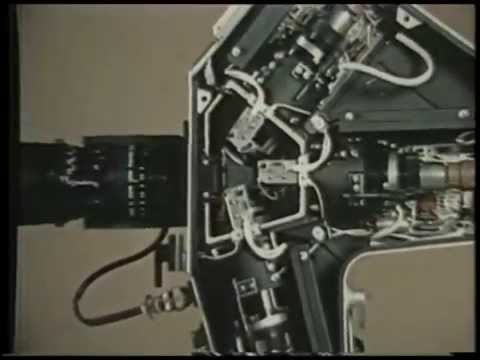

Introducing The RCA TKP 45 & TK 76 Prototypes
Ultra Rare! Introducing The RCA TKP 45 & TK 76 Prototype…
The RCA TKP 45 was the first portable color camera without a backpack and debuted in 1974, two years before the TK 76 color ENG camera. At the 6:19 mark, you’ll see the TK 76 prototype that fortunately didn’t look anything at all like the final version.
This RCA sales tape includes footage from the field testing, some of which was at The Rose Parade. This was probably the first ever EFP or Electronic Field Production camera as it was mostly built for that and not Electronic News Gathering (ENG), but would work in either application. Our friend Lou Bazin was the principal RCA engineer on this, and many other RCA camera projects including the TK44, 45, 46 and 47. Enjoy and share!
What A Team! Their First Teaming And How The Met!
What A Team! Their First Teaming And How The Met!
This may be the first candid photo of Jackie Gleason and Art Carney ever taken. Gleason looks very young here and this was probably taken during his tenure as host of the Dumont ‘Cavalcade Of Stars’.
On the Dumont show, Gleason’s regular characters included Charlie Bratten, a lunchroom loudmouth who always spoiled the meal of the mild mannered Clem Finch, played by Carney. Gleason and Carney developed a good working chemistry, and Gleason recruited Carney to appear in other sketches, including of course, The Honeymooners.
In a way, Morey Amsterdam was responsible for this pair meeting. When Morey was the host of ‘Cavalcade Of Stars’ before Jackie’s arrival, he brought in Carney for a few sketches and the director, Joseph Cates (brother of Gil Cates), liked him. When Gleason took over the hosting job and wanted a new straight man for some of his sketches, Cates introduced him to Art Carney.
On both the radio and television versions of ‘The Morey Amsterdam Show’ (1948-50), Carney played a character known as Charlie The Doorman. Carney had seen Gleason in his first television work as the star of ‘The Life Of Riley’, That show only lasted part of one season but it was not canceled because of low ratings or Gleason’s desire to leave…it was a dispute between the producer and the sponsor. Now you know how one of comedy’s best teams came together. Enjoy and share!
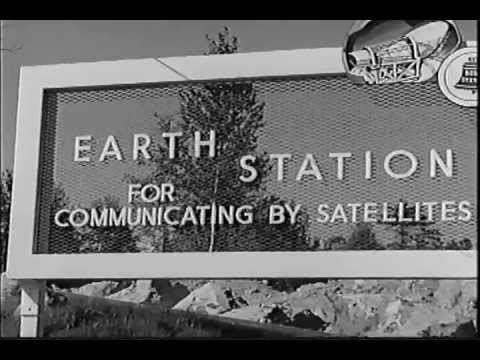

July 11, 1962…Telstar Beams First Transatlantic Television Signal
July 11, 1962…Telstar Beams First Transatlantic Television Signal
Fifty two years ago today, Telstar went into operation as the world’s first telecommunications satellite. In this excellent video. hosted by NBC newsman Frank Blair, we get the whole story and at the 7:15 mark, Ed Hurlihe takes over the narration with a film of the first images transmitted. Enjoy and share!
https://www.youtube.com/watch?v=uHC5fkYch0Q
50 year anniversary of the World’s First Transatlantic Television Signal More information at http://telstar50.org
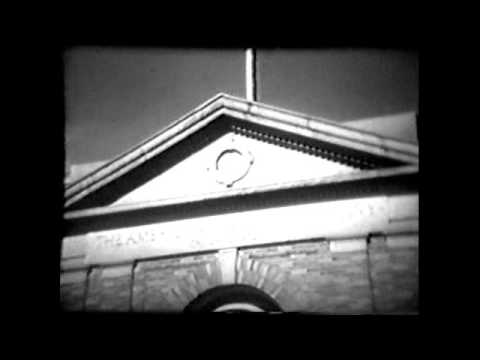

July 10, 1950…’Your Hit Parade’ Comes To Television
July 10, 1950…’Your Hit Parade’ Comes To Television
The video here is from New Year’s Eve of 1955 from NBC Studio 8H and starting at the 2 minute mark, “Memories Are Made Of This” is performed by a singer posing as a stage manager with him getting a ride on the Panoram dolly camera near the end.
The show started on the NBC Radio Red Network in 1935 and came to NBC television viewers on Saturday nights from 10:30 till 11, from July 1950 till the summer of 1957. The show was in color from ’54 till ’57 when NBC canceled it.
In the fall of ’57, the show ran on CBS for a year, but rock and roll had put a big dent in the show’s popularity and that was it’s last season. Enjoy and share!


Did You Know A Cameraman Has The Most Emmy Nominations? It’s true!
Did You Know A Cameraman Has The Most Emmy Nominations?
It’s true! His name is Hector Rameriz and he is considered one of the most successful artists in Emmys history. His career spans four decades and yesterday, he received his 72nd nomination for an episode of ‘Dancing with the Stars’, maintaining his record as the most nominated individual in Emmy history. He’s followed by Sheila Nevins, the president of HBO Documentary Films, who now has 67 nominations.
The Emmy Legends video interview is below and at the 45:00 mark, Hector talks about his work on ‘The Carol Burnett Show’ and tells us about the day Carol and Harvey Korman did the famous ‘Gone With The Wind’ parody. They had to stop for a half hour to get all the laughs out of their systems! Good luck Hector! Enjoy and share!
My RCA TK42
My RCA TK42
Here is another of the professionally shot portraits of a few of my cameras. This TK42 is forty seven years old and was built in 1967. By my count, there are only about 20 of these that have survived.
RCA built the TK42 from 1965 till 1969. Of the 376 made, only 6 were sold to networks and that network was the Canadian Broadcasting Company. The other 370 went to local stations in the US. When the internal lens sticking (overheating) problem became evident, RCA came out with the external lens TK43 in 1967 and built 93 of them between then and 1970. Enjoy and share.


The RCA TK47, Rush And A Beautiful Camera Op!
The RCA TK47, Rush And A Beautiful Camera Op!
From 1987, here’s the Rush song ‘Time Stands Still’…but that’s the only thing still here. This opens in a television studio with every man’s blond fantasy behind the RCA TK47. You’ll see a lot of old video tricks in this, but they were new then and very overused. Take your Dramamine and click on the video.
By the way, the TK47s in the US were blue and beige, but I think RCA painted the export cameras different colors as I have seen red ones in Europe and this may have been done in Canada. Thanks to our friend in Argentina, Eduardo Vilela for sharing this.
#t=85″ target=”_blank”>https://www.youtube.com/watch?v=dMSFqXGZ5TQ #t=85
Amazon: http://bit.ly/Rush2112SDE_Web Music video by Rush performing Time Stands Still. (C) 1987 The Island Def Jam Music Group
‘I Love Lucy’…Warming Up The Audience
‘I Love Lucy’…Warming Up The Audience
Here is a new shot of Desi doing the audience warm up for the show. Part of his routine was to tell the audience not to worry about having their view blocked by the cameras, because “they would never be in the way”. At that point, all three dollied in for a tight shot and no one could see Desi. This always got a laugh. By the way, these Mitchell cameras are fitted with 1000 foot magazines which was good for about eleven minutes. Enjoy and share!
Desilu…In The Beginning There Was 6633 Romaine Street
Desilu…In The Beginning There Was 6633 Romaine Street
During the first few years of ‘I Love Lucy’, Desilu Productions rented space at General Service Studios, which is now the Hollywood Center Studios, on Santa Monica Boulevard and North Las Palmas Avenue.
Desilu used Stage Two which was named Desilu Playhouse and a special entrance was created at 6633 Romaine Street on the south side of the lot allowing entrance into the Desilu Playhouse.
The second photo shows Desi Arnaz on the steps to the Culver office. During its heyday, Desilu Productions owned one of the largest and most complete studio facilities in the world for the production of television, motion picture, industrial and commercial films.
Between 1957 and 1967, it was the only film producer in the industry that operated and maintained three separate studios, — Desilu Gower, Desilu Culver, and Desilu Cahuenga — each possessing certain distinct physical features designed to meet every possible production requirement.
The three studios included a total of 36 soundstages and 500 offices situated on 63 acres of land, with building and stage space comprising approximately 1.2 million square feet. They owned four more studios than MGM and eleven more and Fox.
Normal personnel consisted of approximately 400 employees, with this figure rising to 1,800 at maximum production level. With the exception of regular staff members, Desilu engaged most of its creative, artistic and production personnel on a show-by-show basis when necessary. Because of Desilu’s long-standing
industry-wide record of fine labor-management standards, it consistently drew to its productions the cream of Hollywood’s creative and production talent.
The World’s First And Only Camera Limousine
The World’s First And Only Camera Limousine
I think this Cadillac limousine was first used on President Eisenhower’s inauguration on January 30, 1953. It was NBC’s mobile unit purchased to use in the parade, just ahead of the President’s car. I think the microwave signal from the car was shot to an NBC truck that was nearby and was sent on to the tower pickup from there.
There probably was not pool coverage of the parade route, but if there was, I’m pretty sure this was a proprietary vantage point for them. Enjoy and share.
The ODD History Of The TWO El Capitan Theaters in Hollywood….
The ODD History Of The TWO El Capitan Theaters in Hollywood….
The El Capitan Theater…a very familiar name to movie and TV fans, but did you know there were two El Capitan Theaters in Los Angeles? There were, and the only thing they had in common was their famous name.
In this photo, you see the home of ‘Jimmy Kimmel Live’ next to the original El Capitan and the show comes from what was once the Hollywood Masonic Temple. This is now called The El Capitan Entertainment Center at 6838 Hollywood Blvd. This movie theater is the site of the original El Capitan which opened in 1926 and this has never been a radio or television studio. Both are now owned by Disney.
You probably know the “other” El Capitan better as The Hollywood Palace at 1735 Vine Street. It’s now called The Avalon Theater, but when it was built in 1927 it was the Hollywood Playhouse.
The original El Capitan location on Hollywood Blvd., started as a legitimate theater and presented live plays, with over 120 productions including such legends as Clark Gable and Joan Fontaine. By the late 1930s, business was faltering. When Orson Welles was unable to locate a theatre owner willing to risk screening Citizen Kane, he turned to El Capitan, and in 1941, Citizen Kane had its world premiere there.
It closed for renovation and re opened on March 18, 1942 as the Hollywood Paramount Theatre. Its inaugural film presentation was Cecil B. DeMille’s Technicolor feature ‘Reap the Wild Wind’, starring Ray Milland, John Wayne, Paulette Goddard and Raymond Massey.
Meanwhile at 1735 Vine Street, that property was renamed The El Capitan Theatre in 1943, and was used for a long-running live burlesque variety show called Ken Murray’s Blackouts. CBS Radio also did shows from here including ‘My Favorite Husband’ starring Lucille Ball.
In the 1950s, still under the name of El Capitan, the theatre became a television studio, and it was from a set on its stage that Richard Nixon delivered his famous “Checkers speech” on September 23, 1952. This event is often mistakenly said to have taken place at the El Capitan Theatre on Hollywood Boulevard.
The Vine Street El Captain Theater was also home to some episodes of NBC’s ‘Colgate Comedy Hour’, and ‘This is Your Life’. In 1963, ABC bought the theater and named it The Jerry Lewis Theater after the show it was to be home to, but the Lewis show died after just 13 weeks. Within a few months, ABC had created ‘The Hollywood Palace’ show and renamed the theater yet again.
There are many similar situations in New York and the one that comes to mind is The Ziegfeld Theater, but that’s another story for another day. Enjoy and share this!
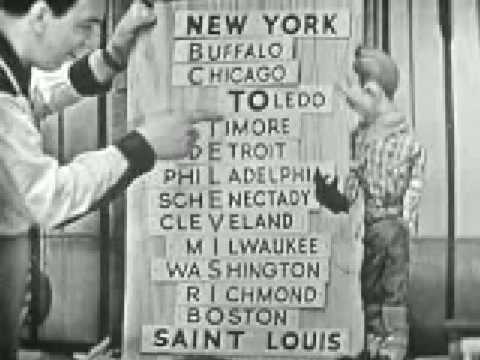

The 14 City NBC Television Network…1949
The 14 City NBC Television Network…1949
From the ‘Howdy Doody Show’, we get some interesting information on the status of NBC’s coverage of the country via the AT&T links for live television. This show was kinescoped and mailed to most of the other major metro areas not covered by the growing network.
My home town of Atlanta was added on October 4, 1950, just 27 days before I was born.
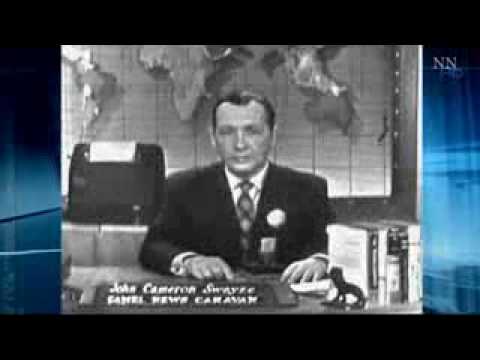

The Early History Of NBC Television News
The Early History Of NBC Television News
This 60th Anniversary video from 2008 starts with some of the only surviving footage of television’s first network news show, ‘The NBC Television Newsreel’ with the voice of Paul Alley. On that show, there was no on-camera anchor, only Alley narrating silent film clips provided by Fox Movietone News. The show aired Monday, Wednesday and Friday nights from 7:30 till 7:45. It began February 15, 1948, but within a few months, the name was changed to ‘The Camel Newsreel Theater’ when Camel cigarettes became the sponsor.
It was actually Camel, and the Esty Advertising Agency (who handled the account) that helped push the development of a nightly news show into being. Camel wanted a five night a week show with a live anchor, so, Esty created a competition between NBC and CBS for the lucrative Camel account. CBS got a wake up call, but NBC got the nod and thus was born ‘The Camel News Caravan’ with John Cameron Swayze as host.
In today’s next post, I’ll share some interesting background I’ve recently discovered on ‘The Camel News Caravan’, it’s host and his wig. Enjoy and share!
https://www.youtube.com/watch?v=mFvTrGDTCYU
Recorded from nightly news Insight from John Cameron Swayze to Brian Williams
You Mean They Weren’t Driving A Real Car To California?
You Mean They Weren’t Driving A Real Car To California?
From Season 4, Episode 12, here’s the cast of ‘I Love Lucy’ setting out for California on January 10, 1955…sort of.
The car is a new Pontiac convertible. In case you did not know, “California, Here I Come” was written for the 1921 Broadway musical ‘Bombo’, starring Al Jolson. The song was written by Buddy DeSylva and Joseph Meyer, with Jolson often listed as a co-author. Jolson recorded the song in 1924 and it was an instant hit. Enjoy and share!
Classic! The Marconi Mark IV
Classic! The Marconi Mark IV
Here is another of the beautiful portraits Parker Smith took of my camera collection. This is one of my favorites. In the US, there are only 6 of the Marconi Mark IVs known to have survived…this is one of them. Please click to enlarge for a clearer image.
Unfortunately, none of the Ed Sullivan Mark IV cameras which shot The Beatles survived. That I know of, none of the CBS New York or Television City Mark IVs made it either. I repainted this camera and dressed it to honor the Sullivan, Beatle cameras.
This was Marconi’s answer to the RCA TK60 and both made great pictures with their 4 1/2 inch Image Orthicon tubes. Enjoy and share.
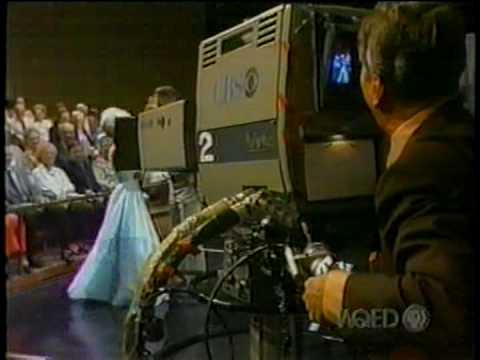

Lawrence Welk Trades Places With The Cameraman…1978
Lawrence Welk Trades Places With The Cameraman…1978
The show was an ABC heavyweight from ’55 till ’71 when it was canceled, but started on a syndicated basis the next year. The 77-79 seasons were shot at CBS Television City. Here’s Lawrence behind a Norelco PC60 with it’s “dual exhausts”. There was a video of this but now it’s gone.